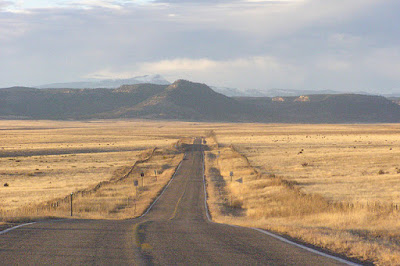The information below in bold lettering is a quote and comes from pages 13 and 14 of the book titled "Southwest, Three Peoples in Geographical Change, 1600 - 1970" written by D.W. Meinig and published in 1971 by the Oxford University Press. This is who we really are... Click here:
The most general product of contact, for two peoples so long together as the Spanish and the Indians had created a third, a blend in blood as well as culture. Soldier settlements alongside Indian Pueblos, the extensive use of Indian labor on homes and towns, growing numbers of captives and slaves from the nomadic bands, from these and other practices, from formal marriages and casual contacts, came the mestizo population.
Although usually largely (and often almost wholly) Indian in blood they became increasingly Spanish in culture - in language and religion, behavior and attire - cultivating their fields in ancient ways but also raising cattle and sheep, and becoming quite independent of the more formal bonds with purely Indian societies. In time such people became the main element in the Spanish founded towns, and their own small villages (plazas) and isolated farms (ranches) became the most numerous kinds of settlements in the Rio Grand Valley.
Thus of the estimated 20,000 "Spanish" in 1800 only a few hundred were wholly that in ancestry as well as in faith and tongue: the ricos in Santa Fe and a few larger towns, officials and patrons, a few religious and perhaps a few soldiers fresh from Spain.
The rest were an indigenous mixture, Mexican or New Mexican, now more numerous than the descendants of either of their progenitors, and the solid nucleus of that steadily enlarging people with which in later years became known as the "Spanish-Americans" or "Hispanos."
Wednesday, May 25, 2016
Subscribe to:
Post Comments (Atom)

No comments:
Post a Comment